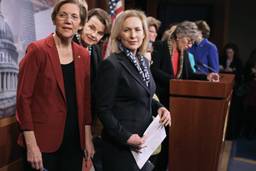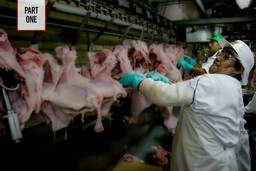Lone Star Uprising: Texas is Turning Blue. But There’s a Lot More to the Story Than That.
Demographic changes are transforming the state’s economy, creating serious challenges to its economic prowess.
Theo Anderson

Nearly three years ago, the demographer Steve Murdock delivered a bombshell about Texas that was hidden in a dense book with dozens of charts.
Changing Texas: Implications of Addressing or Ignoring the Texas Challenge showed that the state would soon be a Democratic-leaning swing state, thanks to the rapid rise of the Hispanic population. But the bombshell wasn’t that the state would go blue. The bombshell was that those demographic changes would transform the state’s economy, creating serious challenges to its economic prowess.
Donald Trump’s presidential bid seems to have triggered the shift to swing-state status that Murdock’s book anticipated. The website Real Clear Politics declared Texas a toss-up this month before moving it to the “leans Trump” category.
The broad outline of the demographics driving that shift are by now familiar. Texas added more than 4 million people between 2000 and 2010 — more than any other state. And this new population is much younger, and consists of more Hispanics, than the state’s population as a whole. In 2010, for example, half of all children under 5 years old were Hispanic, versus only 20 percent of people over 65 years old.
A similar shift is going on in Georgia, which Real Clear Politics ranks as a toss-up. The demographic transformation there is driven by African-Americans, who make up nearly one-third of the population. Georgia may be a “majority minority” state as early as 2025.
The same kind of changes are reshaping plenty of other states as well, including Arizona, Colorado, Nevada and New Mexico. But Texas has always punched above its considerable weight in politics. As with California, what happens there reverberates elsewhere, for good or bad. George Will, the conservative pundit, has written that the GOP will be “finished” if Texas goes blue. That may or may not be true. But a Democratic Texas would certainly make the Republican Party’s path to presidential victory a lot more difficult.
“Texas model”
The most important question, though, isn’t how Texas will change our presidential politics. It’s how Texas will respond to the transformation of its economy.
As Murdock puts it, drily, in Changing Texas: “Non-Hispanic Black and Hispanic populations are likely to continue to have limited socioeconomic resources and those limited resources, if not mitigated, will lead to a state that is poorer and less competitive.”
In other words, inequality is the looming threat to the Texas economy. A moral issue is becoming an economic issue, which means that it hits the state where it really hurts: Its pride.
George W. Bush rode the vitality of the Texas economy to the White House in 2000, and Rick Perry, the former governor, tried to in the 2012 and 2016 elections. Perry touted the “Texas model” as the prescription for the nation’s ill: low taxes, low regulation and very little investment in the public sector.
But it turns out that the economic boom in Texas was about high oil prices, mostly, rather than the genius of the unshackled “free market.” It’s true that the Texas has economy has outpaced the national economy in growth, usually by about two percentage points, over the past decade. But over the past year, as oil prices have crashed, Texas has underperformed the nation.
Oil prices may rise again and temporarily pump up the Texas economy. But in the long run, the Texas model is a loser on multiple levels. Digging oil and coal out of the ground isn’t a sustainable plan in a national economy that’s rapidly moving to clean, renewable energy sources.
“It’s poverty, stupid”
As Changing Texas makes clear, the solution is exactly the opposite of the Texas model. It’s a plan to reduce inequality by investing in public institutions, and especially in better public education. As Murdock concludes: Education is “a key to changing the future of Texas. We must be willing to consider and promote programs that help to bring the levels of socioeconomic resources of disadvantaged populations up to the levels of non-Hispanic White populations … That is a major challenge for Texas’ future.”
The good news, potentially, is that there’s a battle happening around the state’s public schools. In 2011, the legislature, controlled by the GOP, cut about $5.4 billion from the education budget. It restored $3 billion in 2013, but the level of spending hasn’t yet returned to what it was in 2010. And this battle has produced some fierce advocates for public education — most notably, John Kuhn, superintendent of a school district in Texas, who wrote a “Remember the Alamo!” letter in 2011 that was published by The Washington Post. It turned Kuhn into a minor celebrity in education-reform circles.
In addition to criticizing the state’s budget cuts, Kuhn has been a critic of standardized testing, and of President Barack Obama and his former secretary of education, Arne Duncan. Kuhn singled them out in a speech in 2011, noting that “Our achievement gap is an opportunity gap. Our education problem is a poverty problem. Test scores don’t scream bad teaching. They scream about our nation’s systematic neglect of children who live in the wrong zip codes.
“Listen to me, Arne Duncan: It’s poverty, stupid. And that’s not an excuse … It’s a diagnosis. We must as a nation stop assuaging the symptoms and start treating the disease.”
But will we? Can Texas learn to focus on the disease itself, not the symptoms? And, in doing so, turn the tide more broadly?
It’s too soon to know. But what’s at stake is Texas’ pride and self-interest. Here’s hoping that’s enough to motivate real reform.








